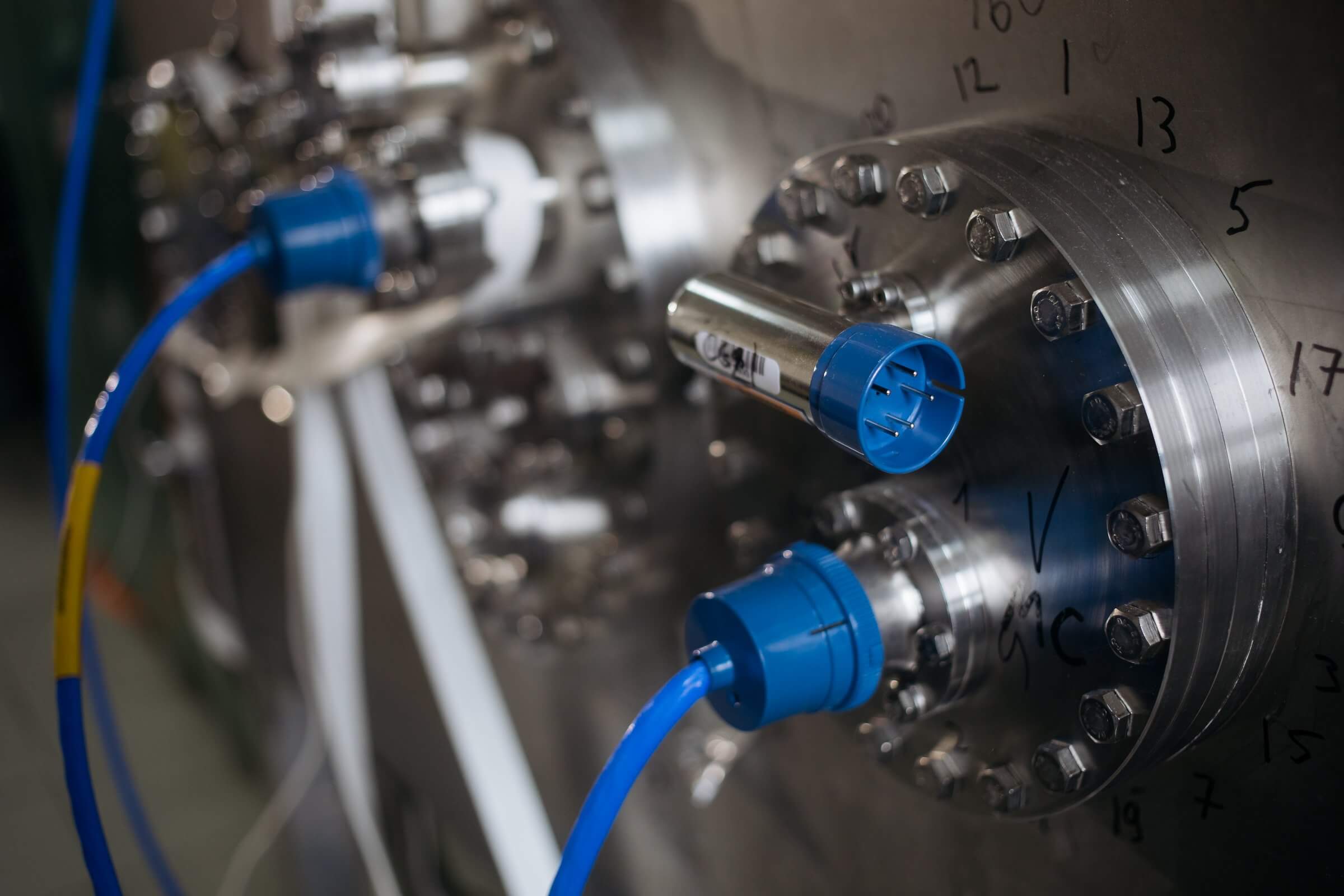At Samara National Research University the world’s largest experimental installation for studying combustion processes has been commissioned, and the scientists have started conducting the first experiments. The installation should help engineers in solving import substitution problems, namely in development of efficient and eco-friendly domestic aircraft engines.
“At Samara University the experimental installation for studying the reaction dynamics and kinetics of combustion processes has been commissioned, at present it is one of the most advanced installations of this type in the world. The first series of experiments has already been started. The group of young scientists led by Professor Valeriy Azyazov conducts research on oxidation and destruction of soot at temperatures up to 1,500 Kelvin, their main goal to minimize formation of soot during fuel combustion”, said the First Vice Rector who is the Vice Rector for Research at Samara University Andrey Prokofiev.
“In future, results of the experiments at this installation will allow us to say a new word in propulsion engineering, as well as be used in development of more efficient and eco-friendly “heart” of domestic aircraft engines – the combustion chamber, which will be competitive in its specifications with world analogues or even surpass them, meeting urgent tasks of import substitution”.
According to Andrey Prokofiev, besides the installation in Samara, there is another similar one, though, in fact, of the previous generation at Lawrence Berkeley National Laboratory.
The size of the installation is important because it allows boosting sensitivity of the installation by placing a large number of recording scientific hardware in it. This makes it possible to significantly increase selectivity and sensitivity of determining reaction products, which, in turn, allows designing more accurate models of combustion processes, and better understand what needs to be done to increase efficiency of fuel combustion, simultaneously reducing harmful emissions.
“A number of leading Russian universities have already shown interest in conducting joint experiments at the Samara installation, and Samara University is ready to collaborate with scientists from Russia and foreign countries”, Andrey Prokofiev stressed.
About the installation
The installation was designed and assembled at Samara University, in the international scientific laboratory “Physics and Chemistry of Combustion” under the Mega Grant issued by the Government of the Russian Federation “Elaboration of Physically Justified Models of Combustion”.
The installation has been created since 2017. To accommodate the components and the auxiliary equipment of the installation, a whole hall was allocated in the laboratory, however the main platform for staging the experiments is the vacuum chamber, which is approximately two meters long and one meter high. The chamber weight is one and a half tonnes, and for lifting the chamber and bring it in the University laboratory on the third floor, the construction crane was used some time ago. Since the installation operates under ultra-high vacuum, then, according to the lab personnel, there were requirements for its assembly as those applicable to deep-sea vehicles or spacecrafts to be complied with, to make sure that all the joints were perfectly leakproof.
At the end of 2021, work on assembling the installation was completed, after which the scientists spent several months calibrating the equipment and preparing for the first experiments.
The “heart” of the installation is the high-temperature chemical microreactor in the form of the thin ceramic tube that heats up to 1,500 Kelvin. The tube length is 20 mm, its inner diameter is 1 mm. During the experiments, the gas mixture of the researched reagents diluted with the inert gas, is fed into the tube.
Chemical reactions are initiated in the red-hot microreactor, the products of which are fed further into the ultrahigh vacuum chamber in the form of the molecular beam, and ionized by vacuum ultraviolet radiation, after which, “having caught” the resulting ions, the mass spectrometer very accurately determines the mass and isomer composition of the products formed as a result of the chemical reaction.
- “The experimental installation has a number of unique features, it makes it possible to research and simulate not only the processes in the combustion chambers of engines, but also chemical reactions characteristic of deep outer space. It is designed in such a way that in future experiments with crossed molecular beams can be carried out on its basis, due to which scientists can study chemical reactions occurring in cosmic molecular clouds”, said Valeriy Azyazov.
- “These experiments will allow us to better understand the chemical evolution of the Universe and, possibly, the ways of the origin of life itself, because, as it is known, many biologically important molecules, as amino acids, can be synthesized in outer space on the surface of stardust formed from molecules of polycyclic aromatic hydrocarbons (PAHs). On Earth, PAHs belong to harmful pollutants, and are present in the exhaust of any hydrocarbon-fueled engine”.
 RU
RU  EN
EN  CN
CN  ES
ES 
